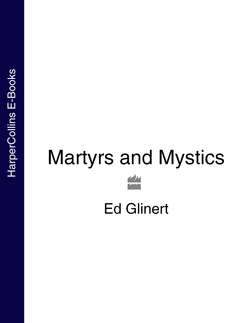Читать книгу Martyrs and Mystics - Ed Glinert - Страница 14
Hampton
ОглавлениеHAMPTON COURT PALACE, Hampton Court Road
The palace was built in the twelfth century for the Knights Hospitallers, religious warriors who took over from the Knights Templars as protectors of pilgrims travelling to the Holy Land. It became a royal palace under Thomas Wolsey, Henry VIII’s Lord Chancellor 400 years later, and was where in 1604 a conference led to the production of the greatest English Bible – the King James.
The Hampton conference was organised not to produce a new Bible but to seek a settlement between the Puritan and Anglican wings of the Church. The Puritans expected James to be sympathetic to their cause. But John Reynolds, one of their leaders, made a tactical error during the conference by using the word ‘presbytery’. James was sensitive about the way the Presbyterians had restricted his power as a monarch in Scotland and felt he had to assert his role as head of the Church by supporting bishops. Viewing the Puritans’ motion as a move to limit his power, he voiced the infamous threat: ‘No bishop, no king!’ and won the day.
As the conference proceeded, Reynolds suggested delegates discuss producing a new translation of the Bible. It was a timely move, for even though the Geneva version was popular, the clergy didn’t like its marginal notes which proclaimed the Pope as the Antichrist. Reynolds explained that ‘Those which were allowed in the reigns of Henry the eighth, and Edward the sixth, were corrupt and not answerable to the truth of the original.’
James was keen that ‘some special pains were taken for a uniform translation, which should be done by the best learned men in both Universities’. The conference agreed that a translation be made of the whole Bible ‘as consonant as can be to the original Hebrew and Greek; and this to be set out and printed, without any marginal notes, and only to be used in all churches of England in time of divine service’.
The king appointed fifty-four ‘learned men’, including Reynolds, Lancelot Andrewes and William Barlow (though, oddly, not Hugh Broughton, the foremost English Hebrew scholar of the time), to work on the new translation, dividing them in six groups at Westminster, Cambridge and Oxford. They based their new edition on the 1568 Bishops’ Bible, but also consulted previous milestone works by William Tyndale and Miles Coverdale. The task took four years, including nine months of refining carried out in London. Thomas Bilson and Myles Smith, who wrote the preface, conducted the final revision, which was then printed in London by Robert Barker, printer to the king.
The King James Bible or Authorised Version (it was authorised by the king) stands as a masterpiece, but more for its literary content than its religious validity. Phrases that are now a rich part of English vocabulary – ‘coat of many colours’, ‘fight the good fight’ – were first found within, alongside passages of unmatchable quality and clarity: ‘Though I speak with the tongues of men and of angels, and have not charity, I am become as sounding brass, or a tinkling cymbal . . .’ and ‘His body also was like the beryl, and his face as the appearance of lightning, and his eyes as lamps of fire, and his arms and his feet like in colour to polished brass, and the voice of his words like the voice of a multitude’, for instance.
In the eighteenth century the King James replaced the Latin Vulgate as the standard version for English-speaking scholars. But disingenuously it also came to be seen as the divine text, refutation of which was a cardinal sin. Subsequent versions, while trying to jazz up the translation to make it more ‘relevant’, have come little nearer to capturing the original intention of the Scriptures and have fallen well short of the King James version in literary qualities.
→ The Gunpowder Plot, p. 81
